On This Day…January 3rd
On the 3rd January, 1943, Staff Sgt Alan Magee (Ball Turret Gunner) pictured below, was blown out of his B-17 (named, 'Snap! Crackle! Pop!') at 22,000 feet after it was hit by flack. Without a parachute, Magee thought his time was up and before losing consciousness he clearly remembered saying to God, "please don't let me die as I haven't even lived yet". It seems that someone was listening, as the young NCO fell through the glass roof of the local train station in the French town of St. Nazaire and was found cradled in the lattice of steel girders that supported the ceiling.
When he regained consciousness, German soldiers took him to medical care where they found Magee's right leg and ankle were broken, several dozen lacerations, and his right arm was all but severed. He had also suffered several internal injuries.
"I owe the German military doctor who treated me a debt of gratitude," Magee said, "He told me, 'we are enemies, but I am first a doctor and I will do my best to save your arm.'"
Magee kept his arm and eventually made a full recovery. He spent most of the rest of the war as a POW. In 1995, Magee was invited back to France as part of a ceremony sponsored by local French citizens to thank Allied servicemen for their help in the war. Magee was able to see monuments to the crew of Snap! Crackle! Pop!, including the nose art (below) which had been used as a Nazi trophy until after the war when a French man recovered it. This important relic was restored in 1989.
USS Princeton (seen here off Seattle, January 3rd, 1944) was originally laid down as the light cruiser Tallahassee (CL-61) She was converted to a carrier before launching and re-designated CV-23. The hull number was changed to CVL-23 in July 1943. From the get go, Princeton was a very busy ship, taking part in several key battles and landings.
On 24 October 1944, Princeton was taking part in attacks on Luzon airfields to support the Leyte invasion. She was hit by a Japanese dive-bombing attack and could not recover from the fires, particularly when a bomb magazine went off, causing huge explosions. 108 men were lost and 1,361 crewmen were rescued, in no small part due to the heroics of the crew of the USS Birmingham, who lost 233 men in rescue efforts.
A great photo of USS Columbia (CL-56, named for the city of Columbia, South Carolina) in the Surigao Strait, Philippine Islands, 3rd January 1945. The photo was taken from USS Makin Island and shows the Measure 33 (1d) camouflage beautifully.
Deactivated US Submarines at Mare Island Naval Shipyard, California, 3rd January, 1946. The Subs are mainly grouped into Gato, Sargo, Sturgeon, and Balao Class ships. For the really geeky of you out there, the ships are...
Piranha, Searaven, Guavina, Sargo , Saury, Spearfish, Bashaw, Gurnard, Mingo, Sunfish
Tunny, Lionfish, Seahorse, Guitarro, Sand Lance, Pampanito, Scabbardfish, Macabi, Sealion.
FM2 Wildcat being re-armed while wings are still folded aboard the USS Mission Bay (CVE-9) - January 3rd, 1944.
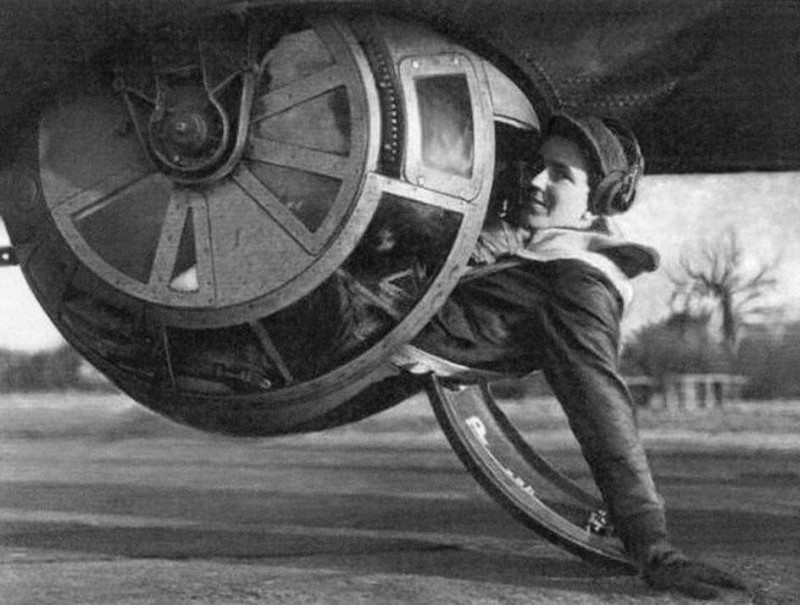
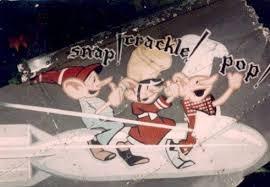
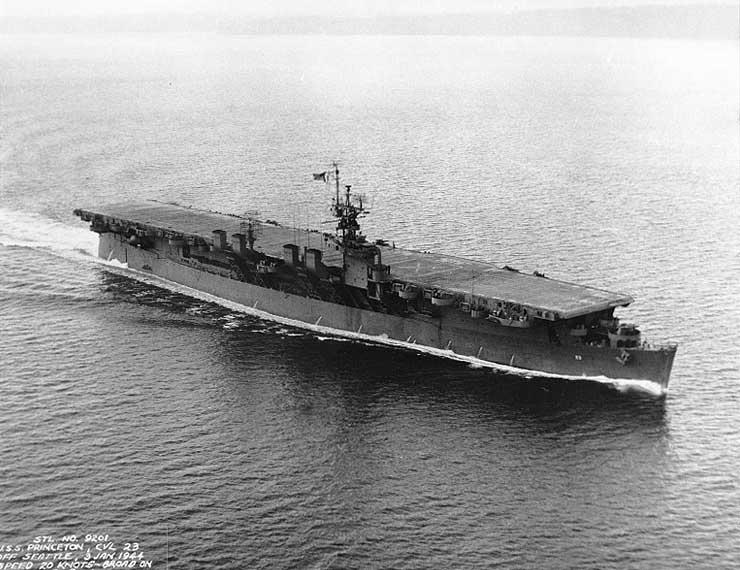
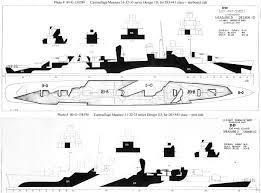

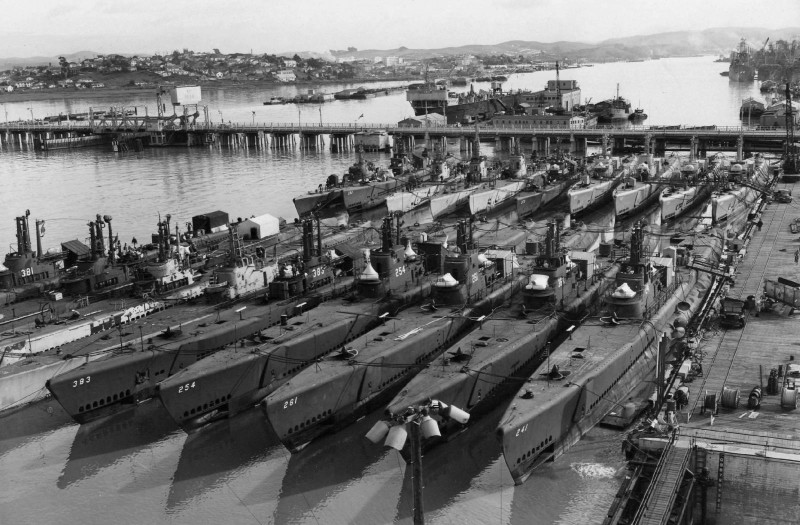
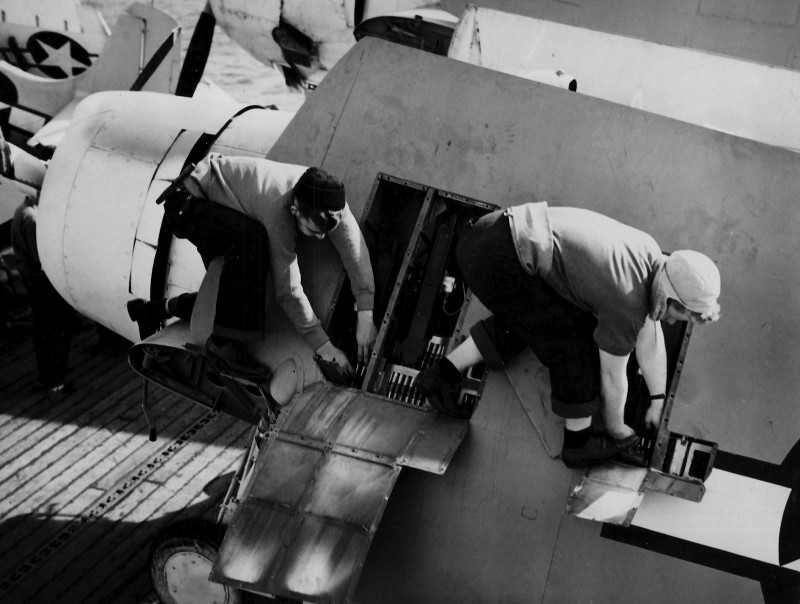
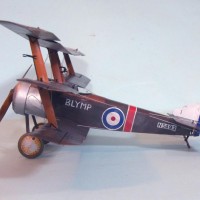
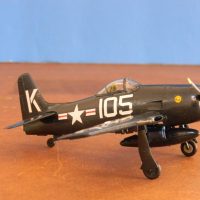
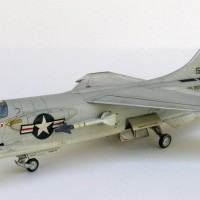
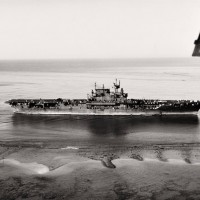
Thank you, David; your selection of daily historical events is outstanding, once again.
FYI, for those interested, IIRC, the USS Pampanito still survives and is on display near Pier 39, in San Francisco. Other historical ships (like the USS Jeremiah O'Brien) are located nearby.
Happy New Year to all!
Staff Sgt Alan Magee"s (Ball Turret Gunner) story is proof that there is good,evil and miracles do happen. Finding a doctor who believed in the "Hippocratic Oath"over the prevailing winds of thought in Germany was nothing short of a miracle.
The late Andy Rooney spoke of what it was like going on bomber missions into the heart of Europe and seeing bomber crews having to bail out of their falling bombers at altitude. Which meant falling through formations of aircraft dropping bombs and fending off fighters. Then getting low enough to pull your shoot... now do that with out a shoot.
The word "Greatest Generation" is very apropos.
Thanks David.
Stephen, if Hollyweird made a movie of this, you’d laugh at the absurdity of some i***t trying to make you believe this actually happened. Surviving being blown out of the plane, the fall of 20, 000 ft, the crash though GLASS, the landing on the girders. Finding a good hearted doctor with surgical skills belying his role. Then surviving two years as a PoW. THEN living another FIFTY years.
It’s beyond human understanding.
David thank you so much for taking the time to post these. It is not a small effort to match the date every day, and match it with consistently interesting photos and their stories. I haven't piped in to say so, but I enjoy reading these every chance I get (which is a few times a week).
thank you!
Paul
It’s really kind of you to share this, Paul. The series is something of a ‘lonely impulse of delight’ so it is superb for me to hear it connecting with people. Appreciate you commenting.
@feroc
Great set Dave, you wouldn't catch me in that ball turret for a gold pig, wasn't there a British guy who survived a similar fall, from a Lancaster I think, and landed in trees and snow.
I've been following some Youtube shorts on the progress of Lancaster Just Janes (NX611) rebuild or restoration to flying status and they came up with a stat of how many bomber crews never came back around 57,000 individuals. Then you read incidences were tail gunners survived being shot down by gliding to the ground in the tail section of their Lanc...
57, 000 men...
Increíble lo de Alan Magee !.Gracias David por estas historias y fotos .
De nada, Julio. Un placer, amigo.
That's an incredible story about Magee, so many stories that need told and remembered. The ball turret is one of the most isolated areas in the bomber. I can't imagine the fear. The turret isn't that uncomfortable and it is fairly quiet compared to the rest of the crew areas, not counting two .50s blasting next to your ears. The parachute does not fit however, so if the electrical system is disabled you have to hand crank the turret so the hatch will open inside the airframe and grab your chute. In Magee's shoes, I can't imagine how helpless that must have felt.
5 attached images. Click to enlarge.
Terrific photos, Jim., and thanks for sharing them with us. When Magee eventually scrambled free of his turret, he found that the flak blasts had shredded his parachute and the Fortress was on fire. It was then that some 190’s started shooting at the crippled plane, which was when he was thrown from the aircraft.
My mind keeps returning to what he was feeling as he fell through the air with no ‘chute.
One the best 'On this day! I can't imagine being in one of these, and I'm a short guy.
2 attached images. Click to enlarge.
THAT is a tight squeeze for anyone. Being a claustrophobe this would be my idea of hell.
Once again, a great set. Thanks David!
Appreciate the support, Gary - thanks.
AWESOME photos and incredible stories makes these daily posts SO INTERESTING! Keep them coming David!
Thanks, Morne, this means a lot from you considering your business is history. Hope all’s well with you.
Well, David, you've outdone yourself! Your photos are always great and your stories are amazing, but this one ... WoW! 20,000 feet (6000+ meters) of free fall with no parachute. From the look of Jim's photos, the ball turret gunner sure had a great view ... when he wasn't shooting and fighting for his own life & the safety of his fellow crewmen and the plane, that is.
Stephen, @stephen-w-towle I've never heard the story of the tail gunner - can you enlighten us? Thanks!
RAF World War II Incident over England
Ed Wanner reports that in July or August of 1944, he met an RAF tail gunner who was traveling on a train headed for London. The tail gunner claimed to have survived a fall of 4,000 feet in the turret of a Halifax or Lancaster bomber. He showed Ed a newspaper clipping to support his story. The gunner said that the incident happened over England. Ed wonders now whether there is any truth to the story or whether the man was only kidding him. Since it is similar to several other incidents described on this site, it could certainly be true, but we have no other documenting evidence. Has anyone heard of this incident?
Taken from;
http://www.greenharbor.com/fffolder/ffincident.html#anchor1234587
This site documents several incidents about B-24's,B-17's and a Ventura incident where the tail gunner rode the tail section down to the ground. I've also, have heard it verbally from guy who claimed to have met a Lancaster crewman.
Thanks for your encouragement, Jeff. It’s especially nice to share inspiring stories like this that are a counterpoint to the horrors of war. As an illustration of both, I spoke yesterday of how more men died on the USS Birmingham trying to rescue sailors from the Princeton than on the stricken ship herself. A little known (reported) fact about this is when the Birmingham put in for repairs, the civilian cleaning crew refused the contract as they couldn’t stand the smells and sights belowdecks. It was left to the enlisted men to deal with that, which they did.